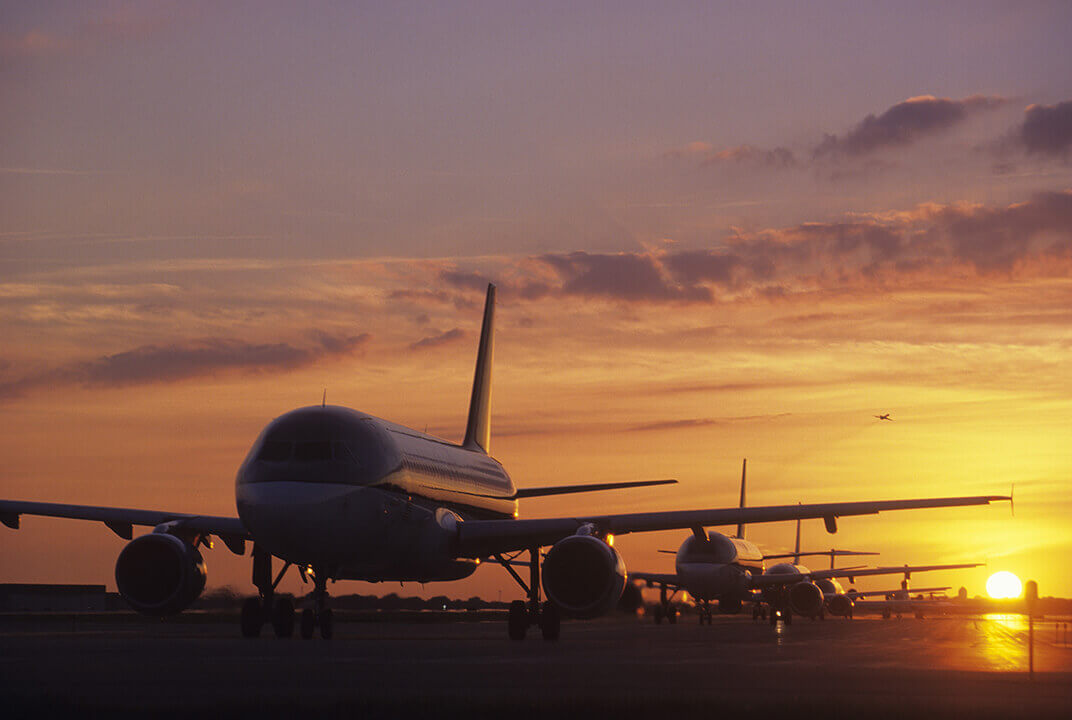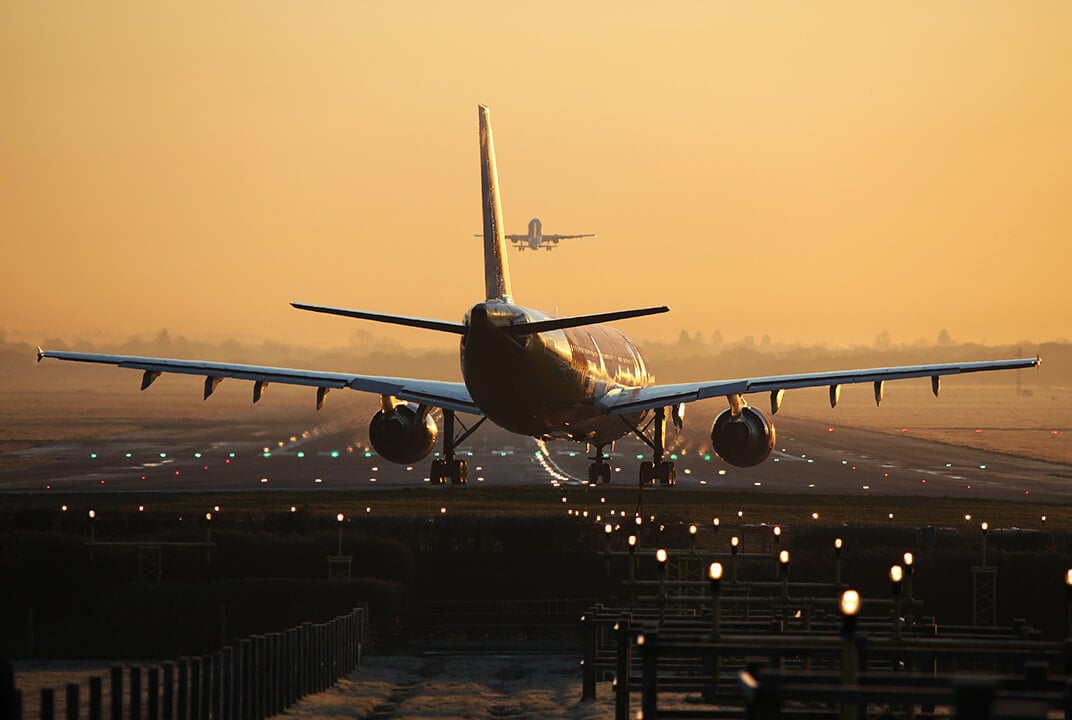Insight | The sky’s the limit 2: the future of airline operational cost savings revealed
Select Language
The sky’s the limit 2: the future of airline operational cost savings revealed
null
Inflight connectivity doesn’t just create revenue, it could save the airline industry US$15bn a year. A new report by the London School of Economics digs deep to divulge the details.
The digital connectivity that is set to transform the airline industry will bring advantages that go way beyond increases in ancillary revenue, as the latest instalment of the London School of Economics’ ground-breaking study shows. In the second chapter of Sky High Economics: Evaluating the Economic Benefits of Connected Airline Operations, the LSE’s Dr Alexander Grous focuses on the financial and operational benefits of inflight connectivity. And it’s clear that the potential pluses are many.
The airline industry is growing at an exceptional rate, with IATA forecasting that air passengers will almost double by 2035. All those extra planes in the sky will mean more fuel burn, and more CO2 emissions. And they will also mean greater challenges in terms of airspace management and aircraft safety. Meanwhile, airlines are facing increased competition as well as rising expectations from passengers, resulting in a reduction in average margins to just 4%.
But the connected aircraft changes the rules. Together with global satellite communications and the technology of the Internet of Things, it can bring about efficiencies and enhancements across the board: from fuel consumption and emissions to maintenance and flight optimisation, and from fleet utilisation and airspace capacity to aircraft and passenger safety.
Combined, these operational benefits could yield savings for the global airline industry of up to US$7.5bn annually based on existing connected aircraft numbers, rising to almost US$15bn by 2035. That means roughly a 1% reduction in the consolidated US$764bn annual global airline cost of operation, according to IATA figures.
So what will be the main benefits that the connected aircraft brings?
Download the report
- Size
- 2 MB
- Size
- 6 MB
Quenching fuel burn
Aircraft fuel accounts for up to 20% of airline operating costs and a third of the global airline industry’s total expenses. While improvements in engine technology have enhanced fuel efficiency, the gains achieved can be rapidly offset by flying inefficient routes. Optimised flight planning and other efficiencies made possible by inflight connectivity have been estimated to yield 2-3% fuel savings per flight, resulting in 3.3bn to 10.1bn litres saved annually globally, at a value of US$1.3bn to US$3.9bn.
An IP-enabled aircraft offers greater efficiency at every stage of its flight. And it’s not just about making pre-planned routes as efficient as possible: satellite-enabled connectivity also means that live weather updates and enhanced data on winds and potential areas of clear air turbulence can be streamed to pilots during a flight. The connected aircraft can avoid areas of severe weather with greater confidence and precision, yielding annual savings of around 1% of fuel burn.
Severe turbulence can increase fuel burn when flight crews seek alternative altitudes, or take unnecessary or excessive diversions around areas of assumed or last reported turbulence. Annual potential global fuel savings from avoiding turbulence are estimated at between US$1.3bn and US$2.6bn.
Weight is also a significant factor in fuel burn. Currently, due to ground communication issues, around 10% of flights depart without winds uplink (the latest winds and temperature data for the pre-planned flightpath) in their flight management computer. This can mean they carry more contingency fuel, and therefore more weight, than is necessary. A connected aircraft avoids this problem, because it can upload data at any time. It can also integrate an automated catering service solution with the airline’s reservations and departure control systems, to accurately forecast passenger numbers and update catering requirements. These kinds of dynamic, real-time adjustments lead to more efficient inventory management, saving weight and reducing costs by an estimated 7% per flight.
Cutting down on CO2
IATA has targeted a reduction in net aviation CO2 emissions of 50% by 2050. The challenge is a big one. The airline industry is collectively responsible for around 2.5% of total global CO2 emissions, but it should be taken into account that the impact per kilogram of high-altitude emissions on climate change is around double that of ground-level emissions. In 2012, commercial aircraft emitted about 0.7 billion metric tons of CO2 globally, putting aircraft CO2 emissions seventh in a national league table after the total emissions of Germany. Between 2006 and 2050, these emissions are forecast to triple as air traffic continues to grow.
Since emissions are proportional to fuel consumption, it’s clear that the efficiencies in fuel burn made possible by inflight connectivity will have an equally advantageous effect in reducing CO2 contributions. These efficiencies include remote engine monitoring, more efficient fleet utilisation and the ability to optimise flight routes in real time. LSE interviews with airlines and leading aerospace solutions providers indicate that the consolidated annual benefit of operational connectivity could be around 2.5% to 5% of current fuel consumption. Taking the lower estimate, this would result in a reduction of 8.5bn litres of fuel, which equates to 21.3m fewer tonnes of CO2 by 2035.
Reducing delays
Crew scheduling issues are estimated to account for 3% of all global flight delays, equating to an annual loss of US$3.6bn. Satcom connectivity can transform the aircraft into a virtual crew room, eliminating the need for crew to visit a dedicated facility at the airport before a flight and thereby maximising on-time departures. In the case of crews en route, real-time data transmission from the aircraft can provide updates directly to the Operations Control Centre, to automatically alert when a crew delay could occur. Interviews with airline managers carried out for the study indicate that they are targeting this area for significant gains, with a crew lateness reduction of at least 50% highlighted by many, which could result in annual savings of around US$1.8bn.
Diversions caused by medical emergencies can also have a significant impact on operations and cause major inconvenience for passengers. And they’re expensive: an international diversion can cost an airline up to US$200,000. However, enhanced telemedicine technology enabled by inflight connectivity could help to reduce the number of diversions, and airline managers interviewed by the LSE identified this area as a key target for improvement through a connected aircraft. Estimates vary widely on the potential savings, but a reduction of just 10% could yield a cumulative decrease of US$1.4bn between 2018 and 2035.
Unscheduled maintenance accounts for approximately half of an airline’s delays. The advent of the connected aircraft means that a huge amount of analytic data can be transmitted from onboard servers to the cloud or to the ground, so components can be monitored and reviewed remotely. This information can facilitate ‘predictive’ maintenance, provide inflight maintenance analysis by engineering teams on the ground, and provide support for the flight crew in making key decisions, including diversion decisions. The result? Airlines avoid unnecessary deviations and limit at-gate delays.
Keeping aircraft flying
When a plane is out of action – so-called ‘aircraft on ground’ (AOG) – it costs an airline significant amounts of money: from US$10,000 to US$150,000 per hour of downtime and up to US$1.2m per day. Globally, AOG is estimated to cost the airline industry US$62bn annually.
The connected aircraft is able to transmit large amounts of data in real time that can reveal insights into its systems and performance, offering the potential to transform existing maintenance processes. By identifying faults before they become major problems, airlines can use the information to make informed decisions that can reduce costly unscheduled AOG. This ‘predictive’ maintenance highlights potential issues and improves planning, resulting in greater certainty for arrivals and departures. And it can also lower costs through a reduction in aircraft malfunctions in less accessible airports.
AOG costs can also be reduced through adverse weather avoidance and other preventative measures afforded by transmitting real-time information to the aircraft. For example, real-time weather data can make it easier to avoid lightning strikes. As we know, these can cause severe damage, requiring extensive repairs that can remove a plane from service for an extended period of time.
Industry interviews and analysis of current AOG costs and contributing factors predict that US$2bn could be saved a year in unplanned maintenance costs by 2035.
Making the most of airspace
A major challenge for the aviation industry is to keep up with increasing passenger numbers without incurring additional delays, fuel burn and CO2 emissions, or additional infrastructure costs, such as new airport construction. The connected aircraft can play a major role in helping to transform the aviation ecosystem.
IP-enabled real-time data exchanges can reduce separation minima between aircraft in the sky, allowing airspace and existing airport and air traffic control infrastructure to accommodate more aircraft. One key aspect of this is the development of satcom-enabled 4D trajectory management, which allows flight path control to be measured in four dimensions, giving airspace users predictable target times within agreed time windows, while maintaining safety standards and considering weather conditions. This enables lower fuel use and emissions, and more controlled arrival times and increased airport throughput.
The benefits of migrating current radar-based systems to satellite-based navigation, automating aircraft position reporting and providing digital communications, are estimated to be worth US$160bn to the industry by 2035.
Setting new standards of safety
It’s ironic that while airline passengers are now often able to surf the internet at 35,000 feet, the most valuable information regarding a flight is still stored on board, and in the case of a catastrophic failure, that data can be irretrievably lost. However, the connected aircraft of the future will be able to stream flight data to a Black Box In The Cloud, meaning vital information is immediately accessible in the event of a disaster.
Transmission of real-time data to and from the cockpit also enables valuable flight updates, including graphical weather and 3D animated views of the surrounding environment. This improves situational awareness for pilots, reducing loss of control and other factors that can cause accidents.
The connected aircraft’s increased ability to avoid bad weather and turbulence can also help prevent serious injuries on board. Around 200 passengers a year are injured in onboard accidents caused by turbulence, sometimes fatally, and this number could triple by 2050 as a result of increased CO2, which may lead to increased clear air turbulence. It’s predicted that at least half of all injuries could be avoided as a result of enhanced navigational information.
Dawn of a new era
Clearly there are several preconditions needed for all of the benefits detailed above to come to fruition: global satellite communications, new operations applications, and the digitalisation of air traffic management. But connectivity is changing every aspect of aviation, and as Frederik Van Essen, Senior Vice President, at Inmarsat Aviation, puts it: “The complete connected aircraft will be pivotal to the digital transformation of the airline industry.”
The Sky High Economics series
About Dr Alexander Grous
Dr Alexander Grous is a lecturer at the Department of Media & Communications and Director of the research function for LSE Enterprise. He’s a specialist in demand-based modelling, communications and transport economics.
Private sector experience includes CXO level roles in mobile communications, high-technology, e-commerce, banking, FMCG and finance. He’s also held strategic roles in directly relevant organisations including Telstra and Lockheed Martin.


